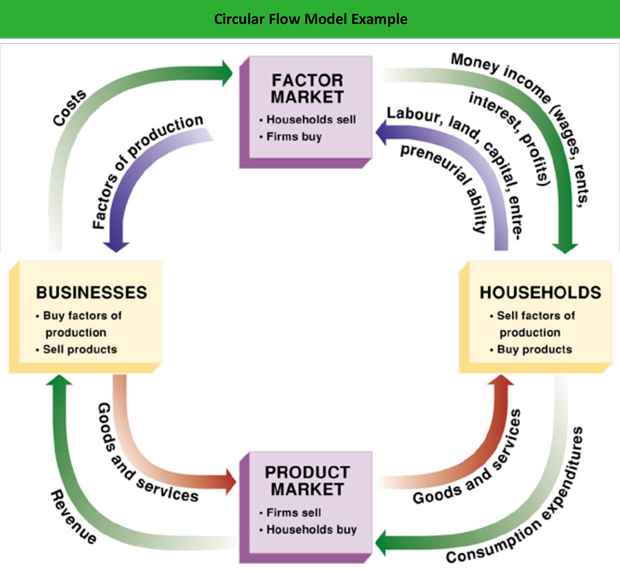Definition: A Circular flow model of the economy is a graphical representation of the movement of money between three sectors – businesses, households, and the government – and three markets – production factors, products, and the financial market.
What Does Circular Flow Model Mean?
What is the definition of circular flow model? The continuous flow of money between these sectors and markets guaranteed the exchange of products and services between consumers and producers, thereby enabling both sectors to pay their taxes to the government.
The assumptions of the circular flow model are the following:
- The household sector includes the consumers who have disposable income to spend on goods and services, seeking to satisfy their needs and wants.
- The business sector refers to all the firms operating in an economy, such as corporations, partnerships, and proprietorships), which are responsible for using their resources effectively and produce sufficient goods and services.
- The government sector includes all the government agencies on a local, state, and federal level, which are responsible for the legislation and the proper functioning of the market. Often, the government is the largest, if not the only buyer of a product (i.e. military supplies and equipment).
- The households spend their entire income on goods and services and do not save any money.
- The goods, services, and productive factors are priced, but the way in which their prices are determined pertains to the market mechanisms and not to circular flow model.

Let’s look at an example.
Example
According to the diagram above, there are two opposing flows between the households and the firms. The goods and services are produced by the firms to be consumed by the households. However, the factors of production, such as labor, land, and capital flow from the households to the firms to be converted into goods and the services that will be consumed by the households.
The households spend their entire money income to buy goods and services in the product markets. In this case, consumer spending is converted into business revenue. In addition, there are transactions that take place between the firms, but these are not shown in the diagram. Finally, the government creates flows both to the households and the businesses, offering services and receiving funds.
Summary Definition
Define Circular Flow Model: CFM means the continuous stream of money exchanged between businesses and individuals.


